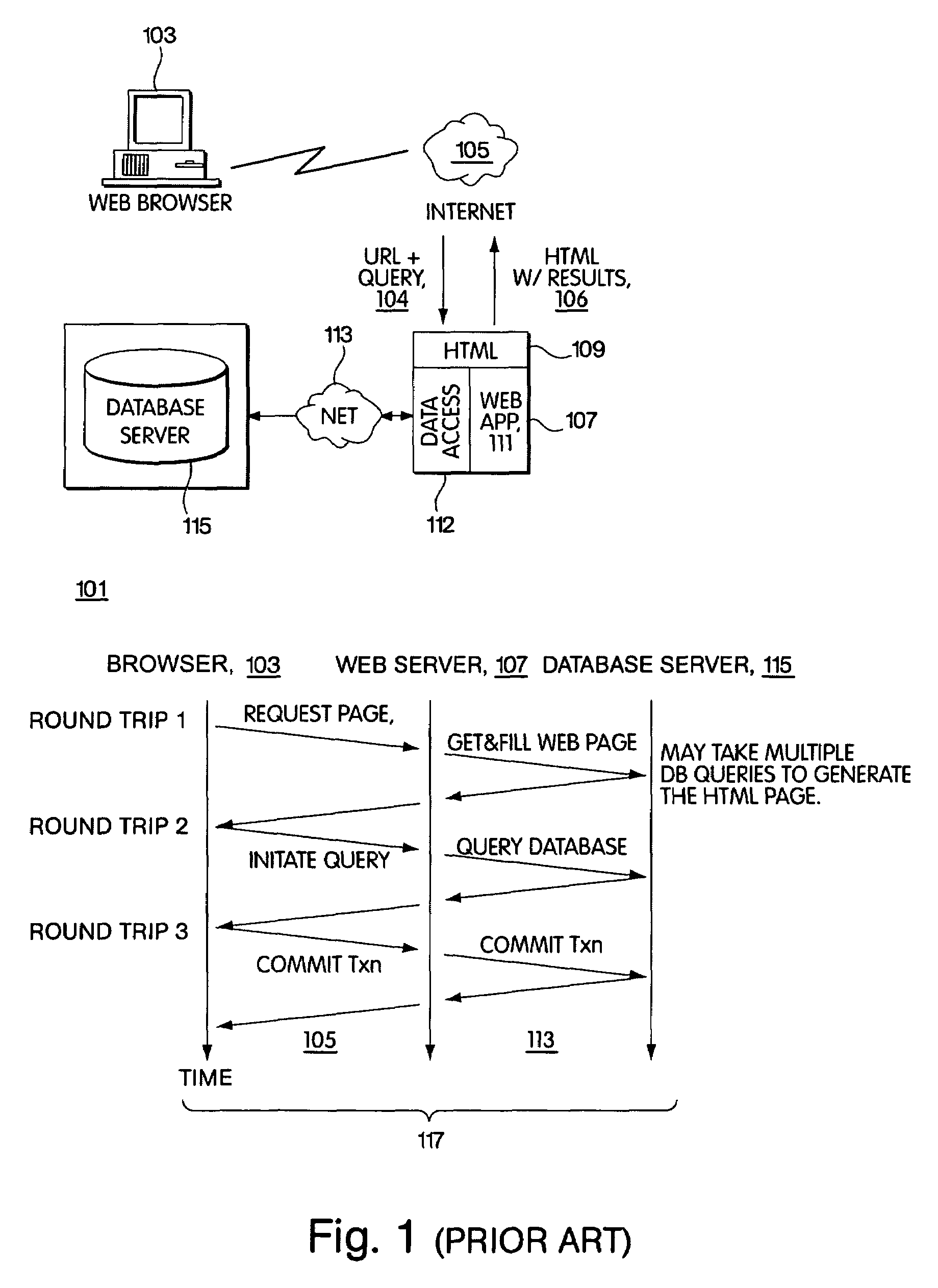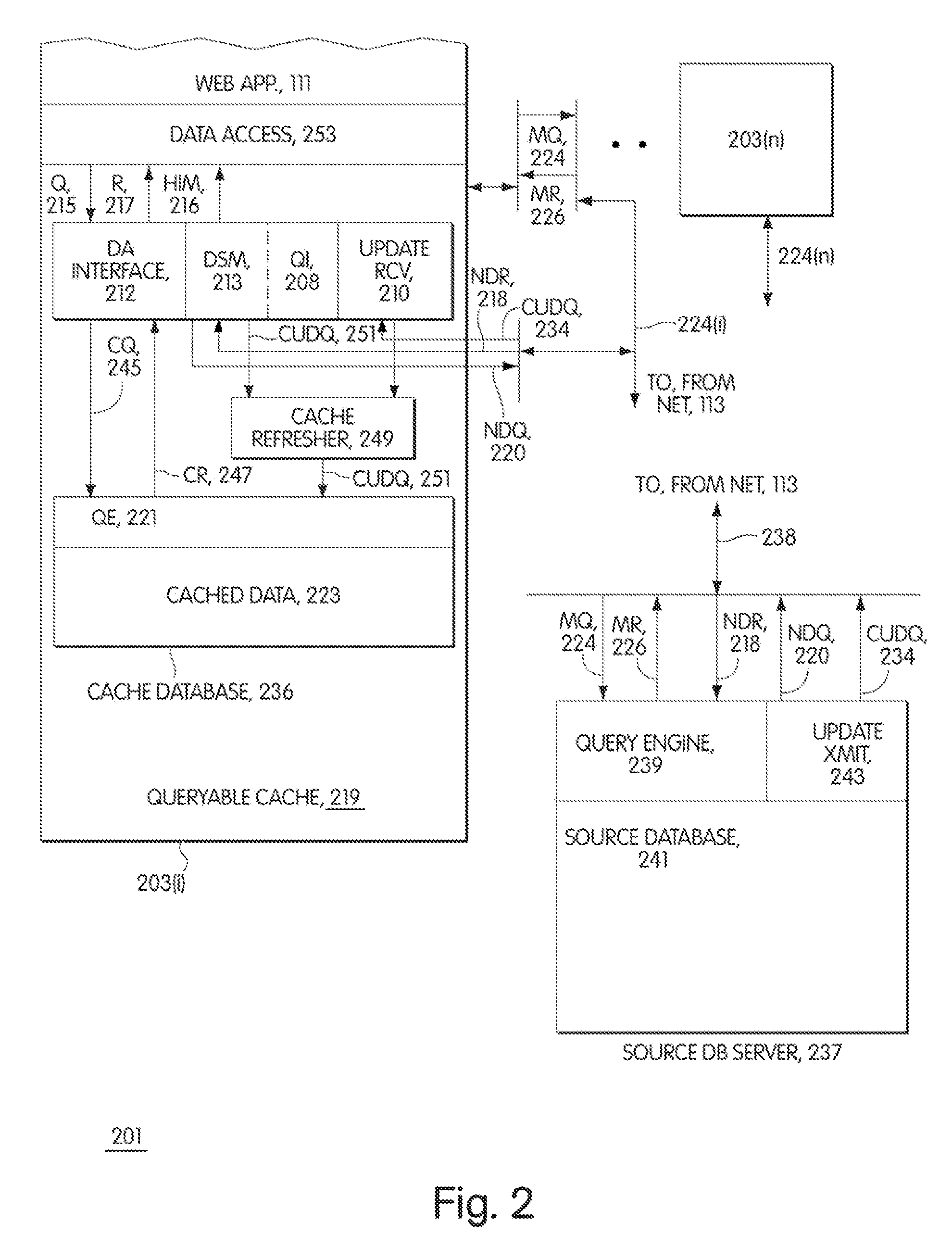Web servers with queryable dynamic caches
a dynamic cache and web server technology, applied in data processing applications, memory adressing/allocation/relocation, instruments, etc., can solve the problems of enormous new burdens on services, difficult access, and huge burdens on database servers
- Summary
- Abstract
- Description
- Claims
- Application Information
AI Technical Summary
Benefits of technology
Problems solved by technology
Method used
Image
Examples
Embodiment Construction
[0029]The following Detailed Description will begin with a conceptual overview of the invention and will then describe a presently-preferred embodiment of the invention.
Overview of the Invention: FIG. 2
[0030]FIG. 2 shows a system 201 for retrieving information via a network which includes one or more network servers 203(0 . . . n). A server 203(i) and another server 203(n) are shown in FIG. 2. Each server 203(i) includes a queryable cache 219 that is automatically updated when cached data 223 changes in source database 241 and in which the contents of cached data 223 are determined by an analysis of what queries will most probably be made by users of server 203(i) in the immediate future. Each of servers 203(i . . . n) is a Web server 107 as shown in FIG. 1, and thus has an HTML component 109, Web application programs 111, and a data access layer 253 which is a version of data access layer 112 which has been modified to work with queryable cache 219. Server 203 could, however, commu...
PUM
 Login to View More
Login to View More Abstract
Description
Claims
Application Information
 Login to View More
Login to View More - R&D
- Intellectual Property
- Life Sciences
- Materials
- Tech Scout
- Unparalleled Data Quality
- Higher Quality Content
- 60% Fewer Hallucinations
Browse by: Latest US Patents, China's latest patents, Technical Efficacy Thesaurus, Application Domain, Technology Topic, Popular Technical Reports.
© 2025 PatSnap. All rights reserved.Legal|Privacy policy|Modern Slavery Act Transparency Statement|Sitemap|About US| Contact US: help@patsnap.com



